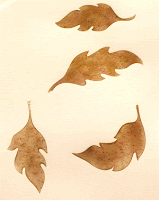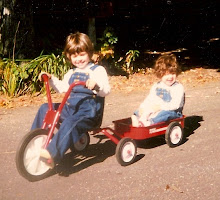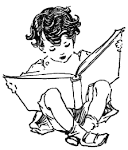Red Leaf, Yellow Leaf
By Lois Ehlert
Book Summary:
This is the story of a sugar maple tree and the child who planted it. As they grow up together, the child watches the tree through all the seasons. Both the tree and the child change in many ways. In the glossary of the book is a description of photosynthesis and its various stages.
Lesson: Maple Leaves Math.
Grade Level: Kindergarten
Lesson Duration: 30 minutes
Standards addressed:Science & Math:
Standard: K-4: The student will demonstrate an understanding of seasonal weather changes.
Standard: K – 2: The student will demonstrate through the mathematical processes
an emerging sense of quantity and numeral relationships, sets, and place values.
Indicator: K-2.5: Understand that addition results in increase and subtraction results in decrease.
Lesson Objectives:
-The students will complete a partner subtraction activity and worksheet, demonstrating competence in subtraction dealing with subtraction up to the number 20.
-The student will have a general comprehension of and be able to articulate why leaves change color in Fall.
Materials:
-Ehlert, L. (1991). Red leaf, yellow leaf. New York, NY: Harcourt Brace & Co..
-Template for leaves (see below).
-Double sided Velcro.
-An 11x17 piece of heavy construction paper/card stock with a bare brown tree trunk cut from construction paper glued down onto it (x13).
-An assortment of 15 leaves that have been laminated (x13).
-A Subtraction worksheet.
-1 dice per pair of students.
-A class list (for observational notes).
-Clipboard.
-White board.
-Dry erase pens.
Introduction:
1. With the class seated on the carpet, the teacher will ask the student how he/she knows it is fall. What are the signs that a person can see or feel (temperature) that signal the beginning of fall?
2. The teacher will ask the student to describe the colors of fall and what happens to leaves. The teacher will ask the student if he/she has ever had to help rake all the leaves that have fallen off of the trees.
3. The teacher will explain: The temperature and amount of light have a big impact on the color of leaves and when they begin to fall of the trees. As the Earth makes its 365-day journey around the sun, some parts of the planet will get fewer hours of sunlight at certain times of the year. In those regions, the days become shorter and the nights grow longer. The temperature slowly drops. Autumn comes, and then winter. Trees respond to the decreasing amount of sunlight by producing less and less chlorophyll (what makes leaves green). Eventually, a tree stops producing chlorophyll. The leaves become a bright rainbow of glowing yellows, sparkling oranges, warm browns, and deep reds.
 4. The teacher will explain that leaves need the sun to make food for themselves, which makes them green, but the weather changes in fall/winter and there is less sunlight. When plants do not get the sun they need, leaves change color and fall of the tree because they also cannot survive in the cold temperature.
4. The teacher will explain that leaves need the sun to make food for themselves, which makes them green, but the weather changes in fall/winter and there is less sunlight. When plants do not get the sun they need, leaves change color and fall of the tree because they also cannot survive in the cold temperature.5. The teacher will introduce the book, Red Leaf, Yellow Leaf, to the class and ask the students if they think the story is going to be about fall and again, why it is that leaves change colors.
6. The teacher will read the story to the class, and then encourage students to ask questions about fall, and the change of seasons due to temperature and amount of light.
7. The teacher will tell the student that for the math activity today they will be related to leaves and they will be using the the concept of how leaves fall off of trees in Autumn to practice their subtraction.
8. The teacher will excuse the class to return to their seats for the activity.
Procedure:
1. The teacher will pair the students up by having them count off by 2's.
 2. The teacher will demonstrate the math activity that the class will be doing in their assigned pairs. The teacher will explain: Each pair will be given a large sheet of construction paper with a tree trunk on it. The tree trunk has 20 little pieces of Velcro on it, but please do not pull them off. The pairs will also get a bag of 20 leaves ( a mix of red and yellow) that have Velcro on the back. Again, please do not pull the Velcro off. Once you have your leaves you want to attach them on the tree with the Velcro. There should also be a dice in your bag, so you will want to take that out as well. You each will be given your own worksheet to record your work on, which I will pass around now (Teacher passes worksheet out).
2. The teacher will demonstrate the math activity that the class will be doing in their assigned pairs. The teacher will explain: Each pair will be given a large sheet of construction paper with a tree trunk on it. The tree trunk has 20 little pieces of Velcro on it, but please do not pull them off. The pairs will also get a bag of 20 leaves ( a mix of red and yellow) that have Velcro on the back. Again, please do not pull the Velcro off. Once you have your leaves you want to attach them on the tree with the Velcro. There should also be a dice in your bag, so you will want to take that out as well. You each will be given your own worksheet to record your work on, which I will pass around now (Teacher passes worksheet out). 3. The teacher will then demonstrate, attaching the leaves to the tree and how the pairs will do the activity. The teacher will demonstrate rolling the dice and subtracting the number of leaves that it says on the dice from the 20 leaves on the tree. The teacher will explain: Both students in the pair will write down the subtraction problem and solves it. The other person in the pair will then roll the dice and do the same thing, only subtracting the number on the dice from whatever number they were left with after the first role. This will continue until there are no leaves left on the tree because all leaves have been subtracted from the original 20 and taken off of the tree.
3. The teacher will then demonstrate, attaching the leaves to the tree and how the pairs will do the activity. The teacher will demonstrate rolling the dice and subtracting the number of leaves that it says on the dice from the 20 leaves on the tree. The teacher will explain: Both students in the pair will write down the subtraction problem and solves it. The other person in the pair will then roll the dice and do the same thing, only subtracting the number on the dice from whatever number they were left with after the first role. This will continue until there are no leaves left on the tree because all leaves have been subtracted from the original 20 and taken off of the tree.5. The class will start the activity and the teacher will walk around and take notes on what she observes.
6. Once the students are finished the teacher will collect the students' worksheets to be assessed.


























No comments:
Post a Comment